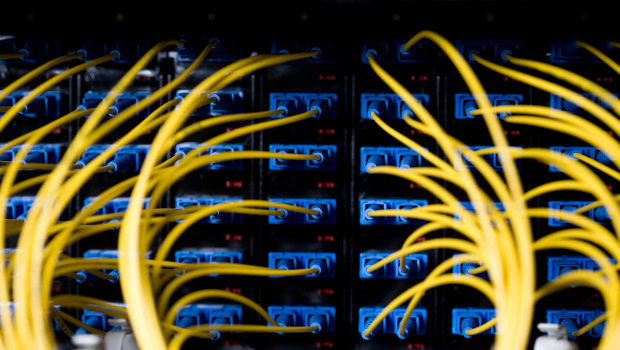Grant meanwhile said that in order to ensure that network investment is consistently going in the right direction “health checks” are a necessity, recommending this type of action “every six months.” The Trilogy professional services manager said this represents a “proactive approach that will eliminate wastage and bottlenecks on the network, this will reduce the need to purchase unnecessary and expensive equipment.”
Over at Datapac, Kinsella sees a shift towards multi-vendor networking infrastructure to ensure companies are getting all they need from their network spend. In the past, he said, enterprises would typically have adopted a single vendor strategy, “however this does not help with optimising costs which has been a key concern.” With that he said more organisations are looking beyond their traditional vendor, finding both cost savings and possibly “better technology” when they do so.
While for Triangle’s Byrne the de-coupling of management function “from the actual hardware/software infrastructure” used to carry or transmit data is something that allows for better optimisation of cost.
Paradigm shift
Looking ahead to where network infrastructure investment will head to in the future, Kedington’s Sadlier said that “first thing to recognise is that networks, their design, usage and importance are experiencing a paradigm shift.” Explaining further he said that traditionally workers have needed to be where the network was. “The trend today and increasingly in to the future is that networks will need to be where the workers are.”

For some enterprises spending was necessary as they may have neglected the foundation of the networking model which would be the physical layer and data-link layer. All other network components sit on this layer, if this foundation is not solid the problems travels up to the other layers. Investment is key in this, Simon Grant, Trilogy Technologies
Agile MD Richardson predicted virtualisation of the network to increase, while also saying to look out for the emergence of “white box solutions which will start to challenge the incumbent market players”. Richardson added, “Increasingly we see customers also use innovative finance options including ‘pay-per port’ or ‘pay-per use’ models. In other words network as a service is going to join all the other ‘XaaS’ acronyms we use. The biggest challenges this will provide include management and orchestration. Without doubt many will start planning and even proofs of concept but will let others take the bleeding edge.”
Hugo pointed to multi-rate network devices as another area to watch for, saying that, as demand for increased bandwidth is always there, “servers and storage devices will demand higher connectivity speeds.” Network interface controller (NIC) cards with “10G, 25G, 40G or 50g will be with us soon.” This, Hugo said, adds up to “incremental speed increases with nominal costs increases from speed to speed. A 25G server NIC will not cost 2.5 times a 10G one. Networks will need to evolve to also support 2.5G/5G for high speed desktop and wireless access points,” he added, “a 1Gbps wireless connection to a laptop will need a minimum of a 2.5Gbps wired connection back to the core network.”
While examining the network infrastructure market over the next year, Datapac CTO Kinsella felt the adoption of wireless networking as the new default access layer for enterprises users will be one development to watch out for. Also, he said, the increasing deployment and usage of software defined networking (SDN) technology will change how organisations design, build and manage enterprise networks.
Efficiency and flexibility
Weighing up where this market will head as 2016 approaches, Trilogy’s Grant said that he sees “momentum” in virtual networking from vendors. “Not so long ago people did not see a benefit to virtualising servers but we now cannot function without its efficiency and flexibility. This will be the same faith for the physical router and switch,” he said.

Clients want greater visibility of the network, with a desire to know exactly how applications are performing. As soon as an end user complains of any problem the automatic assumption is ‘the network is down’. That means you are guilty until proven innocent — so IT needs the right tools to correctly and quickly diagnose and isolate the problem, Darragh Richardson, Agile Networks
Elsewhere, greater predictability on application performance, adoption of collaboration as a service, closer association of wide area network (WAN) and cloud services were all named by BT’s Coakley as areas of to watch out for. These will be joined by the continued adoption of SDN and network function virtualisation (NFV) in core-service provider infrastructure.
Coakley also said newer customer router equipment, with increased functionality “will push certain traffic over certain access types based on performance characteristics required.” This, he said, will deliver a “dynamic traffic experience and will use appropriate network assets only when the organisation’s performance parameters are met. This means expensive bandwidth gets reserved for the applications that really need it.”
Sadlier was another who looked to SDN when asked about the future of the network infrastructure market, saying it will continue to grow in importance as a required capability in any LAN refresh. “However,” he added, “we do not expect the implementation of the technology to keep pace with the hype. Network infrastructure management will continue to grow in importance as networks are asked to incorporate more demands from cabled systems, wireless networks, et cetera, while also moving to the single pane of glass management approach for all the network elements.”








Subscribers 0
Fans 0
Followers 0
Followers